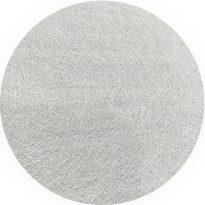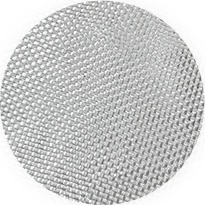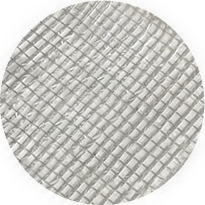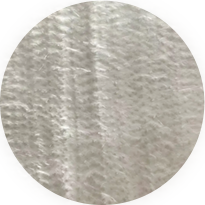Custom Glass Fiber Mat
Fiberglass is a unique material that can be applied to many areas such as buildings, fire controls, boats, the military industry, the electric industry, etc. It is a smart inorganic non-metallic material that has a variety of properties. Good insulation, strong heat resistance, good corrosion resistance, and high mechanical strength are the advantages of fiberglass material.
-
 Fiberglass Wall Covering Mat
View More
Fiberglass Wall Covering Mat
View More
-
 White Fiberglass Surface, Packaging Type: Roll at
View More
White Fiberglass Surface, Packaging Type: Roll at
View More
-
 Fiberglass Tissue Mat for Roofing
View More
Fiberglass Tissue Mat for Roofing
View More
-
 Black Fiberglass Tissue Facing
View More
Black Fiberglass Tissue Facing
View More
-
 Customized Colors For Fiberglass Tissue Facing Mat
View More
Customized Colors For Fiberglass Tissue Facing Mat
View More
-
 Glass Fiber For Molecular Sieve Zeolite Rotor
View More
Glass Fiber For Molecular Sieve Zeolite Rotor
View More
-
 Glass Fiber Mat For Pipe Wrapping/Pipe Wrap Glass Fiber Mat
View More
Glass Fiber Mat For Pipe Wrapping/Pipe Wrap Glass Fiber Mat
View More
-
 Glass Fiber Separator For Battery
View More
Glass Fiber Separator For Battery
View More
-
 200g/400g/600g Glass Fiber Cloth/Grammage Can Be Set Glass Fiber Cloth
View More
200g/400g/600g Glass Fiber Cloth/Grammage Can Be Set Glass Fiber Cloth
View More
-
 300g Multi-Axial Cloth ±45° / Wind Turbine Silo Cover / Grade A Alkali-Free Multi-Axial Cloth
View More
300g Multi-Axial Cloth ±45° / Wind Turbine Silo Cover / Grade A Alkali-Free Multi-Axial Cloth
View More
-
 275g Unidirectional Glass Fiber Cloth Fiberglass Cloth
View More
275g Unidirectional Glass Fiber Cloth Fiberglass Cloth
View More
-
 Blue/Coloured Glass Fiber Cloth/Colour And Weight Are Available For Decoration Of Soft Package
View More
Blue/Coloured Glass Fiber Cloth/Colour And Weight Are Available For Decoration Of Soft Package
View More
-
What Is Glass Fiber Mat?
Glass fiber mat is a foundational reinforcement material widely used across multiple industrial sectors. As manufacturing technologies evolv...
READ MORE -
How Glass Fiber Mats Are Manufactured: Processes, Materials, and Standards?
As a core reinforcement material in the composite materials industry, the glass fiber mat plays a crucial role in automotive components, bui...
READ MORE -
How Can One Maximize the Performance Benefits of Unidirectional Glass Fiber Cloth in Composite Structures?
The strategic incorporation of specialized reinforcement materials is paramount in the realm of advanced composites manufacturing. Among the...
READ MORE -
What Makes Glass Fiber Mat the Essential Layer for Long-Term Pipeline Integrity?
Understanding the Fundamental Role of Glass Fiber Matting The operational lifespan and efficiency of modern pipeline infrastructure, particu...
READ MORE -
What Makes 300g Pultruded Carbon Fiber Felt a Superior Conductive Composite Material?
Understanding Pultruded Carbon Fiber Composite Felt Pultruded carbon fiber composite felt represents a significant advancement in specialize...
READ MORE
How does the manufacturing manner of carbon fiber felt have an effect on its overall performance?
The manufacturing technique of carbon fiber felt has an crucial impact on its performance, which is specifically contemplated within the following elements:
1. **Fiber pretreatment:** Before producing carbon fiber felt, the fiber normally desires to be pretreated, along with floor treatment, modification, and so forth. The great of this step at once impacts the bonding electricity, formability and performance balance of the very last product.
2. **Weaving or forming technique:** The forming manner of carbon fiber felt may be weaving, pressing or other sorts of forming manner. Different molding tactics will affect the association of fibers, the bonding between fibers, and the uniformity of thickness of the felt, thereby affecting the electricity, tension and stability of the carbon fiber felt.
3. **Heat treatment:** Heat remedy is one of the key steps within the production system of carbon fiber felt. By controlling parameters including temperature, time and environment of heat remedy, the diploma of crystallization and microstructure of the carbon fiber felt can be adjusted, thereby affecting its mechanical houses, warmness resistance and corrosion resistance.
4. **Additives and resin impregnation:** In the manufacturing process of carbon fiber felt, certain resin impregnation or other purposeful additives are normally brought. These additives can enhance the formability, tensile power and chemical resistance of carbon fiber mats.
5. **Fiber density and lamination method:** Adjusting the fiber density and lamination approach of carbon fiber felt can trade its floor morphology and mechanical homes. For instance, increasing fiber density can improve the energy and pressure of carbon fiber mat, whilst the use of different lamination strategies can have an effect on its interlayer bonding electricity and fatigue resistance.
How do the extraordinary fiber weaves of carbon fiber material affect its performance?
Different fiber weaving techniques of carbon fiber cloth have a huge impact on its performance, which is especially meditated inside the following components:
1. **Strength and stiffness:** The fiber weaving method of carbon fiber cloth at once influences its electricity and stiffness. For example, in simple weave, the fibers are calmly interwoven within the horizontal and vertical directions, imparting higher power and stiffness; at the same time as in twill weave, the fibers are arranged diagonally, which offers better tensile residences and flexibility.
2. **Surface flatness:** Different fiber weaving strategies will affect the surface flatness of carbon fiber fabric. For instance, plain weave carbon fiber material has a flat surface and is suitable for applications that require a clean floor, even as in twill weave, the surface can be barely rougher due to the interlacing of fibers.
3. **Flexibility and plasticity:** Carbon fiber cloths the use of one-of-a-kind fiber weaving strategies additionally have differences in flexibility and plasticity. Carbon fiber cloth in positive weaving techniques is simpler to bend and bend, and is suitable for a few applications that require complex shapes or curved surfaces.
4. **Energy absorption capacity:** The weaving approach will also have an effect on the strength absorption potential of carbon fiber material. For example, some knitting techniques can provide better energy-soaking up houses and are suitable for programs that require energy-absorbing safety, which includes sports protective gadget or aerospace devices.
5. **Cost and production complexity:** Different fiber weaving strategies may additionally affect the manufacturing fee and manufacturing complexity of carbon fiber material. Some complex weaving techniques may require extra manufacturing steps and higher technical requirements, for this reason growing manufacturing fees.

 English
English 中文简体
中文简体 русский
русский Español
Español










